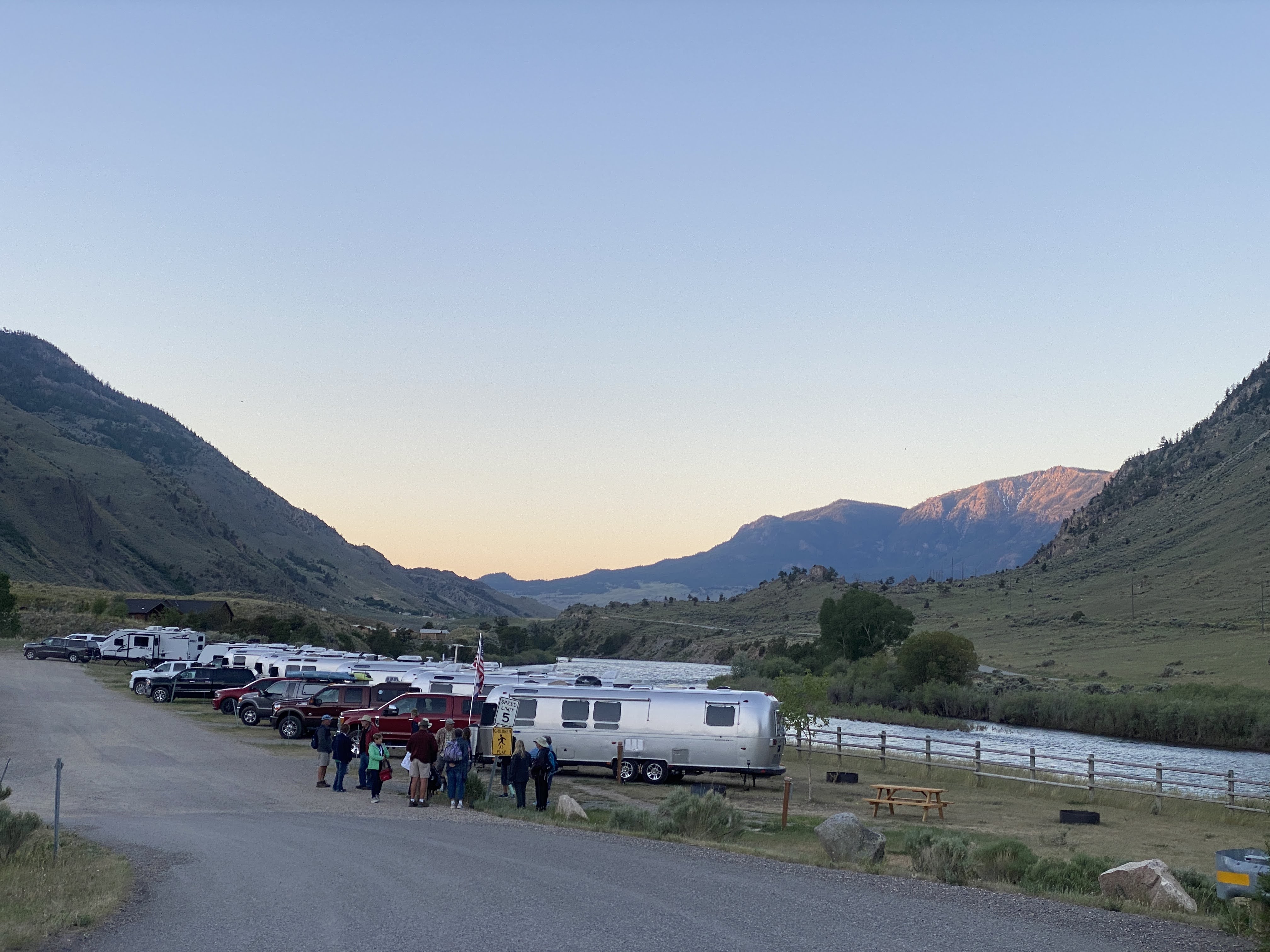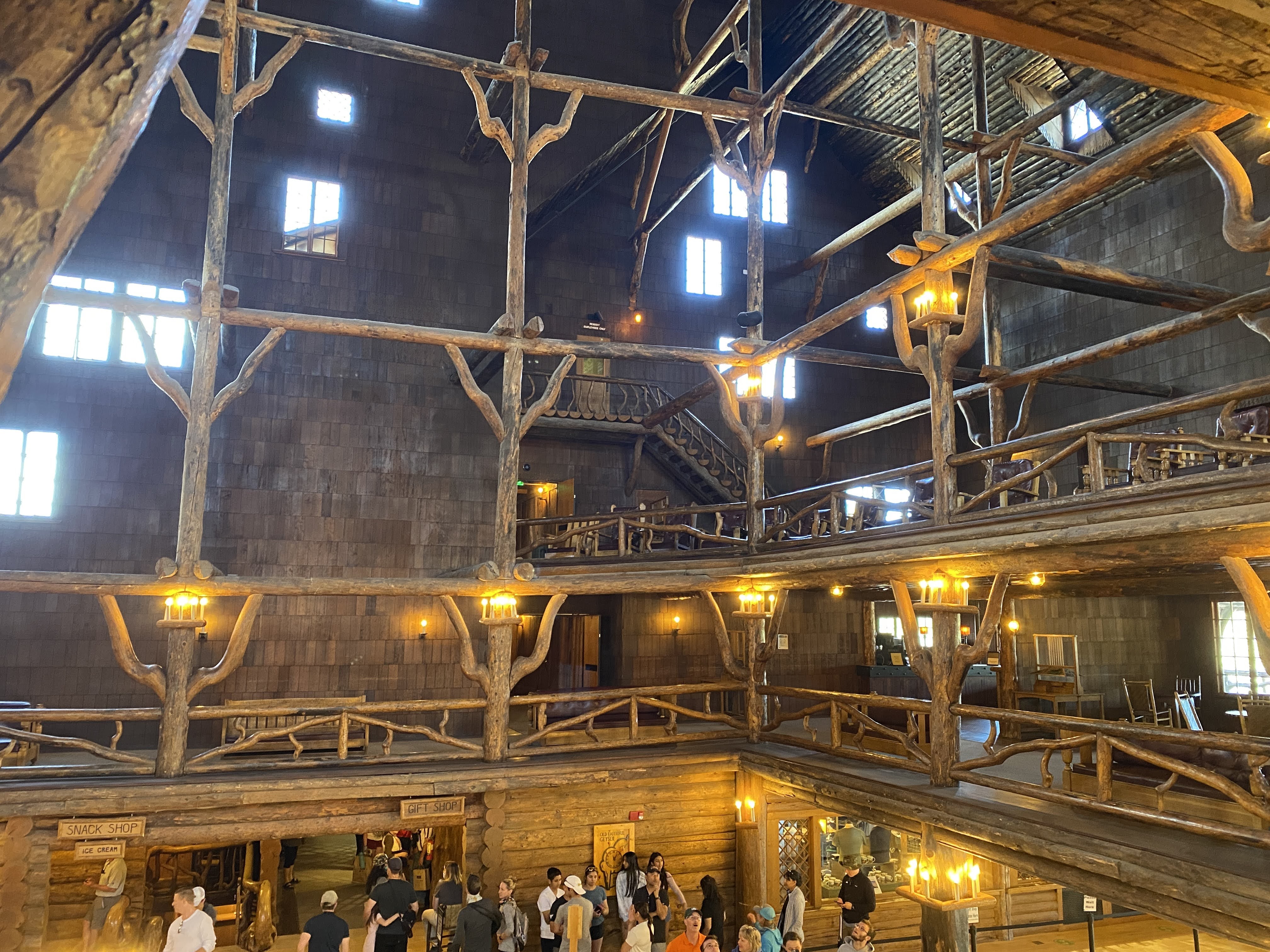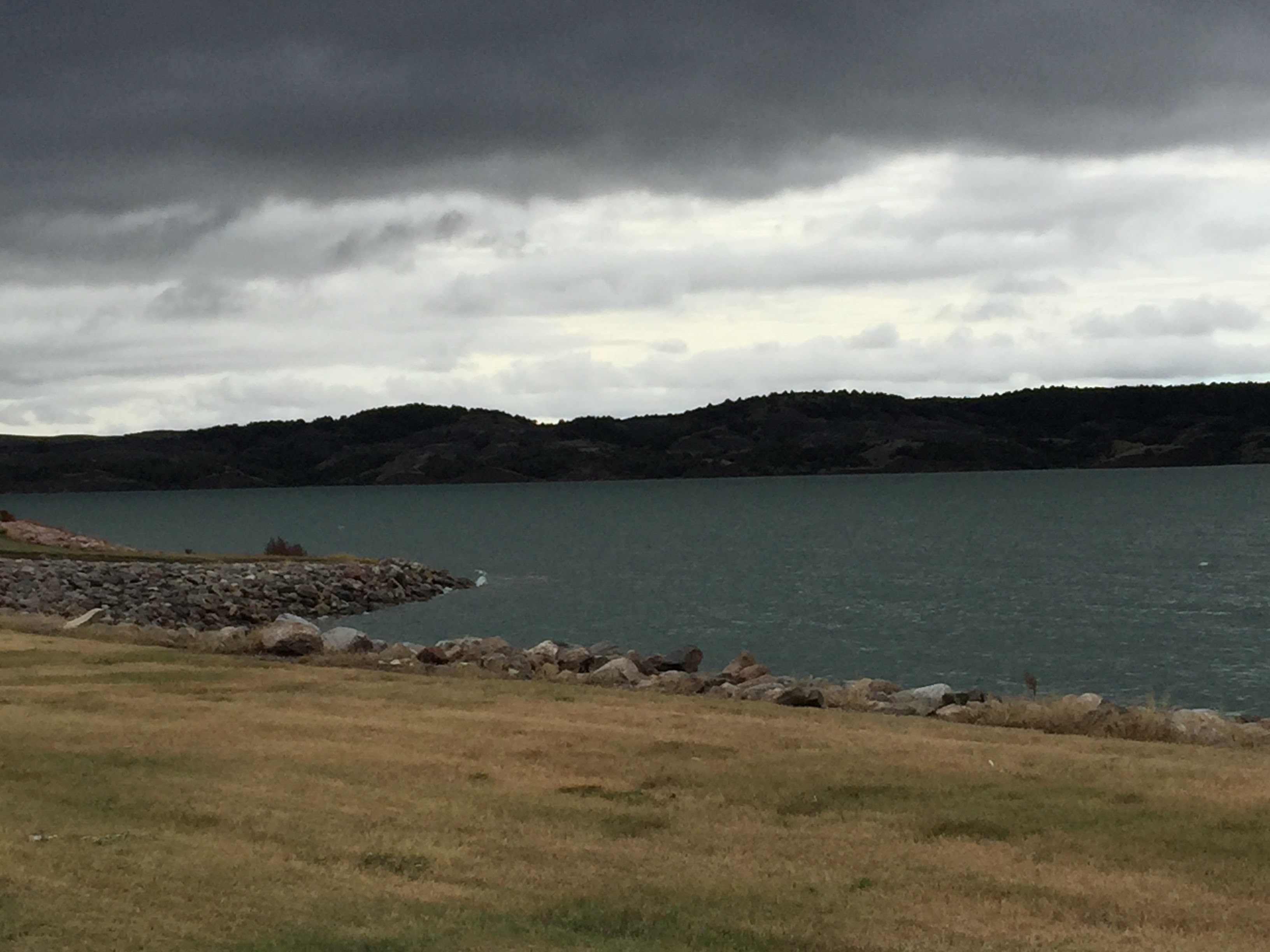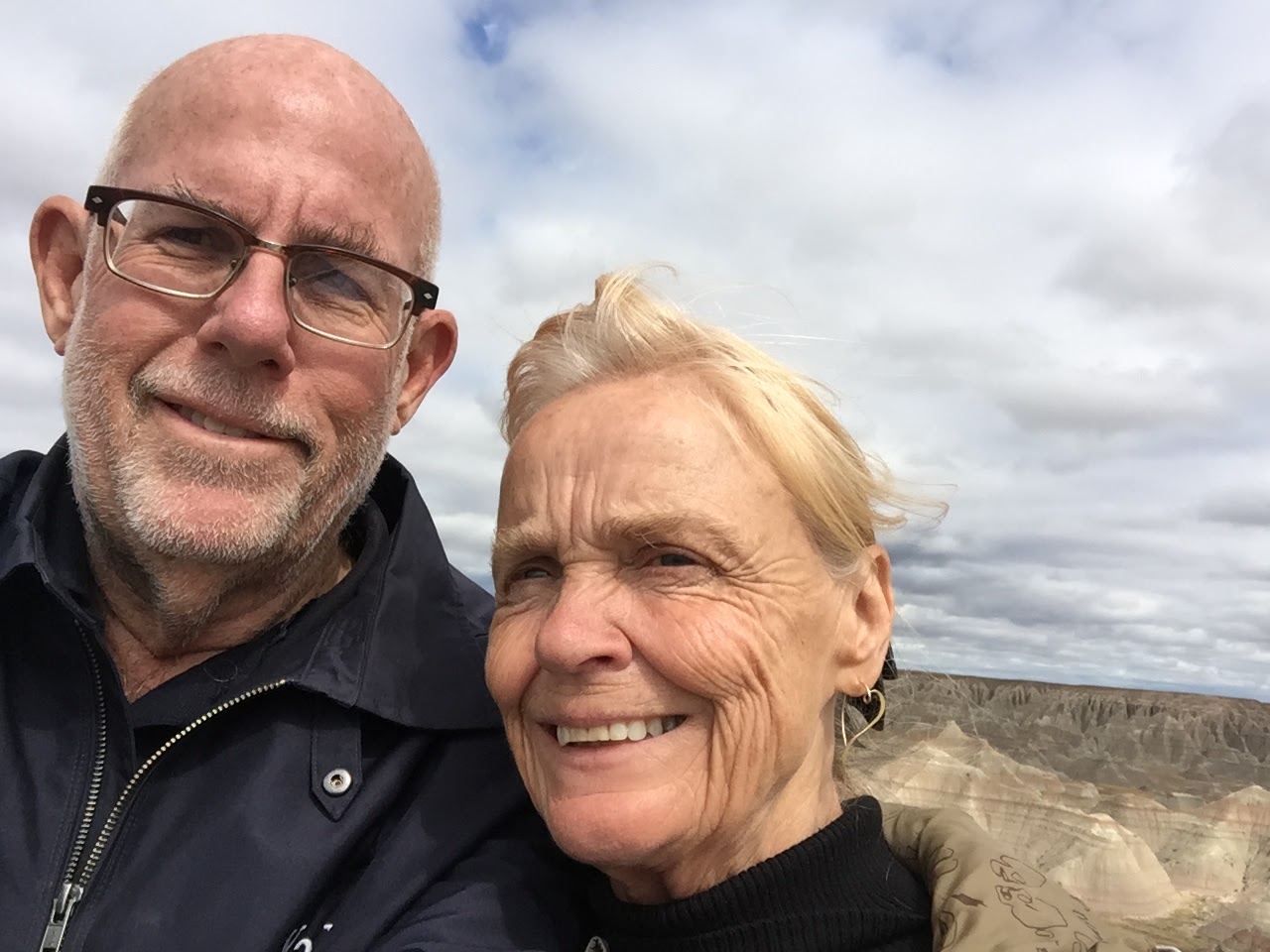We had set the alarm for 4:30 am to be ready to board a small bus at 5:45 am. We are going into Yellowstone today to look for wildlife…
We gathered with the other Airstreamers. There are four buses coming to pick us up to see various parts of the park and to lead us on hikes, keyed to various activity levels.
Our tour today is from Yellowstone Forever, a non-profit subsidiary of Yellowstone National Park. All profits go back to the park, funding various projects, such as the reintroduction of wolves, bison conservation and transfer to prevent overpopulation, fish conservation, the cougar project, and others. Our driver/guide is Mike. The tour was very entertaining, interesting, and comfortable…

Our van arrived and we clamored aboard… There are 11 of us in our Transit van… We left about 6:15 am.
We weren’t in the park for 5 minutes when we spotted a black bear about 300 yards away…

Shortly after that we saw a small herd of Bison…

They decided to cross the road… A classic Yellowstone “Bison-Jam”…


Once they were all safely across we continued on our way…
While we were traveling through the park to our first viewing site our driver told us an interesting story…
In 1870, an accountant named Truman Everts, from Burlington, Vermont, decided on a whim to join an expedition led by Henry D. Washburn and Nathaniel P. Langford into the still largely unexplored wilderness that would later become Yellowstone National Park. This was the second official survey of the Yellowstone region in less than two years.
After falling behind the rest of the expedition on September 9, 1870, Everts managed to lose the pack horse which was carrying most of his supplies. Without food or equipment, he attempted to retrace the expedition’s route along the southern shore of Yellowstone Lake in the hopes of finding his companions. He ate a songbird and minnows raw, and a local thistle plant to stay alive; the plant (Cirsium foliosum, commonly known as elk thistle) was later renamed “Evert’s Thistle” after him. As well as the lack of food, Everts faced the coming autumn weather, including early snowstorms, and at one point was stalked by a mountain lion.
Everts’ party searched for him for more than a week, setting signal fires, firing guns into the air, and leaving notes and caches of supplies for Everts along the lake. Though a site near the lake had earlier been designated as a meeting point in case one of the party members became lost, Everts, for unknown reasons, never showed up. The expedition returned to Fort Ellis by early October. Believing him dead, his friends in Helena, MT, offered a reward of $600 to find his remains.
On October 16, more than a month after his separation from the group, two local mountain men – “Yellowstone Jack” Baronett and George A. Pritchett – found Everts, suffering from frostbite, burn wounds from thermal vents and his campfire, and other injuries suffered during his ordeal, so malnourished he weighed only 50 pounds (23 kg). Baronett and Pritchett were part of a search party which had been sent from Montana to find Everts’ remains. They discovered him, mumbling and delirious, more than 50 miles from where he had first become lost. One man stayed with Everts to nurse him back to health while the other walked 75 miles for help.
Everts’ rescuers brought him to Bozeman, MT, where he recovered. The next year, Everts’ personal account of the experience, “Thirty-Seven Days of Peril”, was published in Scribner’s Monthly. The story of his survival became national news and contributed a great deal of publicity to the movement to preserve the Yellowstone area as the country’s first national park. In spite of their assistance, Everts denied Baronett and Pritchett payment of the reward, claiming he could have made it out of the mountains on his own.
We finally arrived at our viewing location. Our guide hauled out telescopes so that we can get a better look without getting too close to the wildlife – we are trying to see wolves…



Nothing. We stared into the hill across the way looking for wolves. Some folks saw 3 running across the hill. Lynda thinks she saw one wolf…
But I saw more Bison, and a Pronghorn Antelope…
These Bison decided to cross the river…


Next we started out on our hike. We were met by a horse-drawn wagon. These are used to carry supplies into the back-country where Rangers and other workers live year ’round…

Our hike offered many views…

Off to our right, about 30 yards off the trail, we sighted another Black Bear, this one was cinnamon brown color… Luckily we saw him about 200 yards away. We walked through the sage brush to maintain at least 100 yards of separation…

He wasn’t bothered by us, and he was in no hurry to wander away. We spent a lot of time watching…

As we continued watching the cinnamon bear another hiker came by and told us there was a Grizzly Bear across the valley… So he is out there, somewhere, just to the right of the Bison. But he is about 1 mile away, so he is hard to spot…

We stopped for lunch, eating the sandwiches we had brought along…

We started hiking back…

We returned to the Villa. We were hot and tired. We enjoyed a soak in the hot springs after dinner…


(The water isn’t really brown… The pool bottom is…)
And an enjoyable time was enjoyed bay all…



















































































































